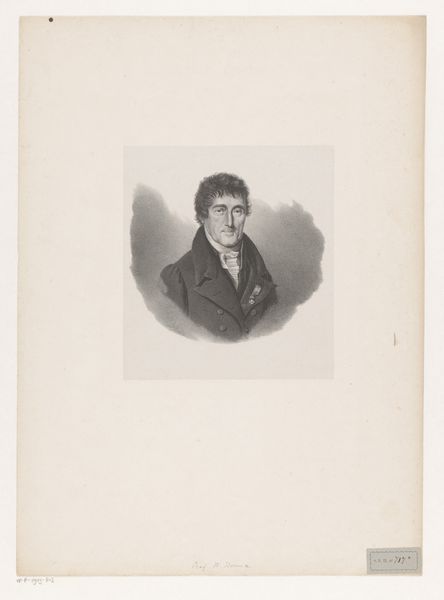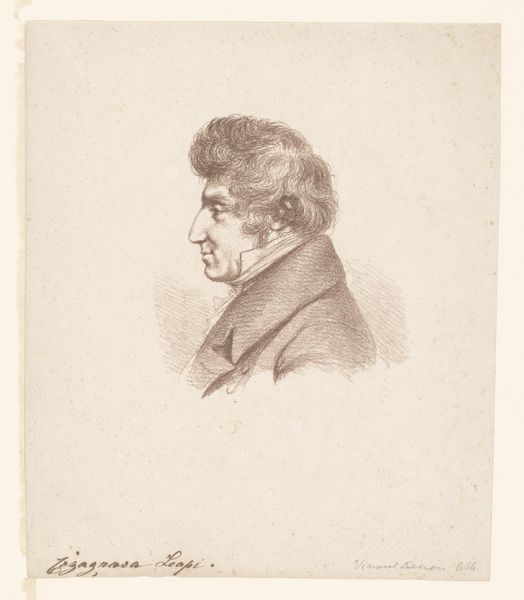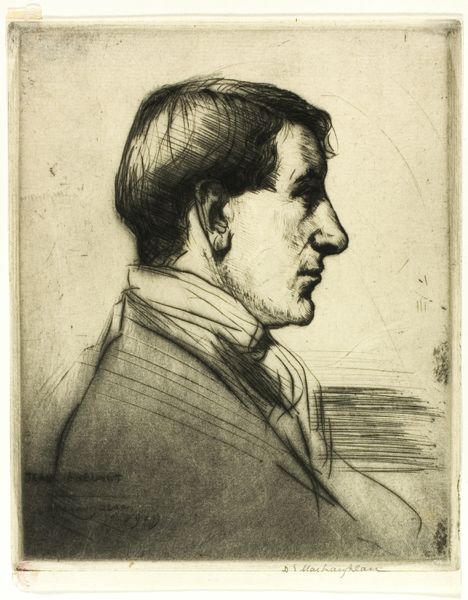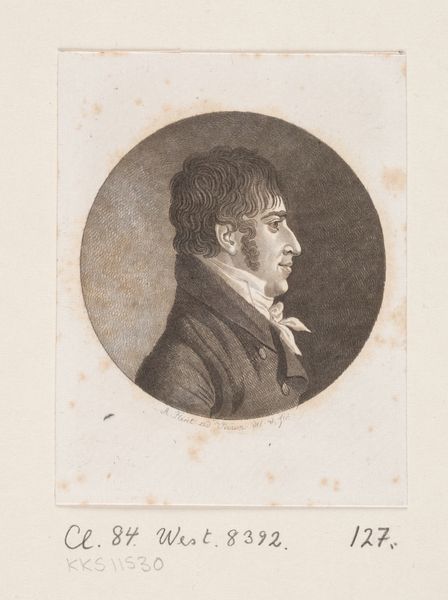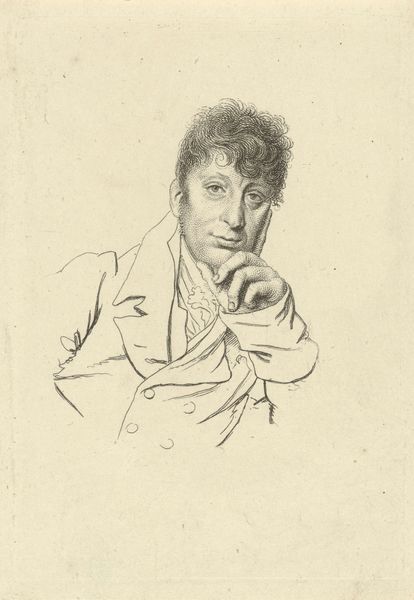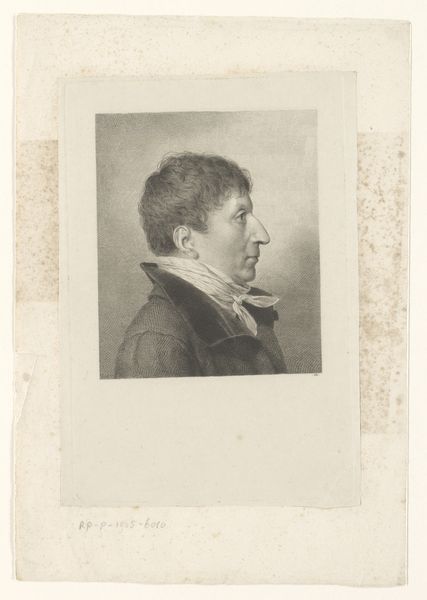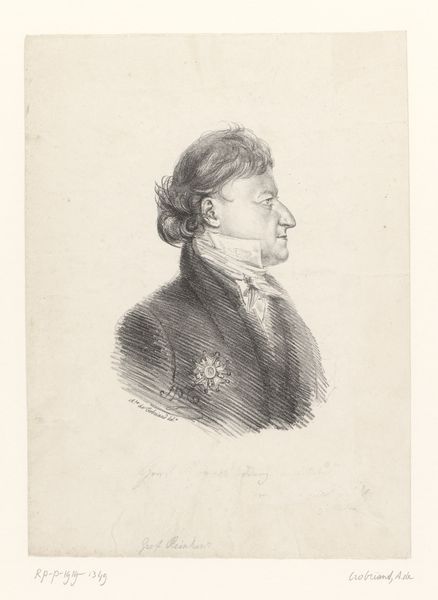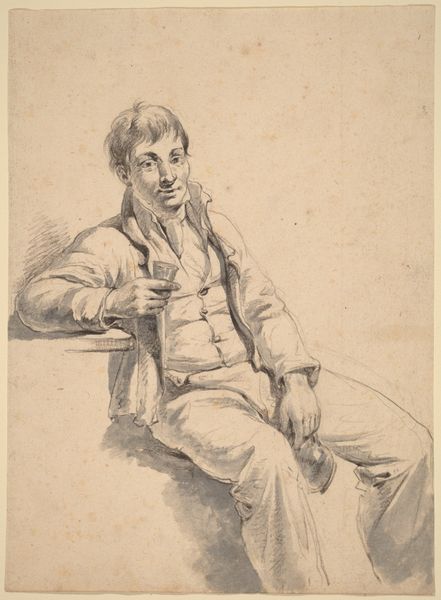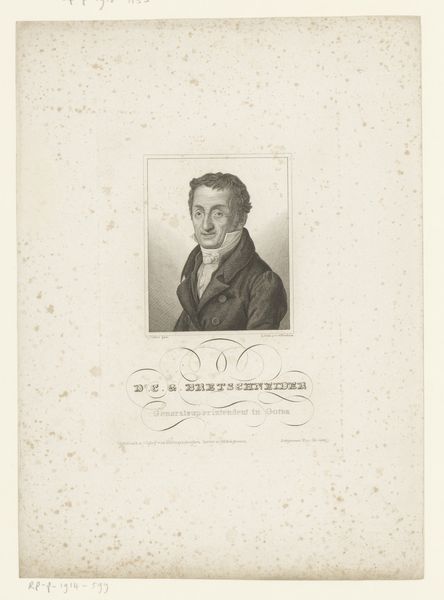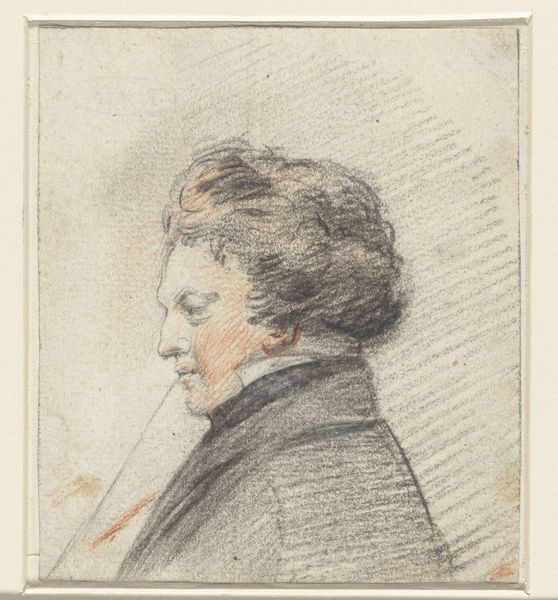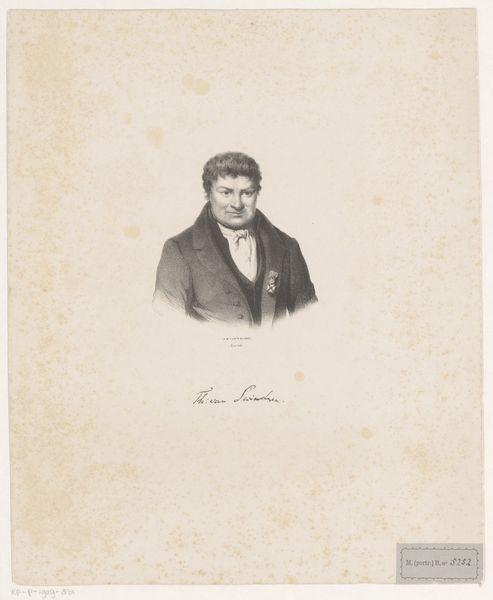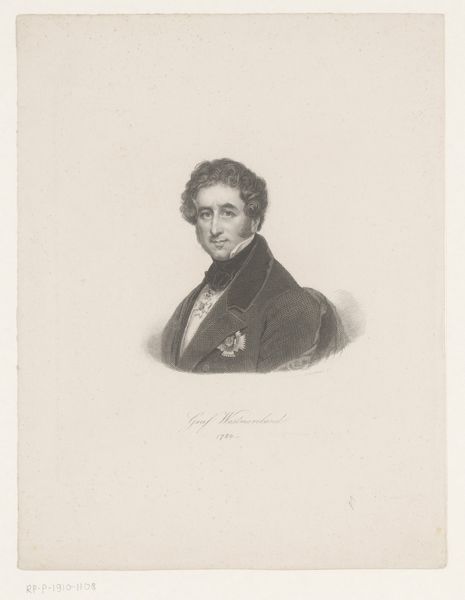
drawing, print, pencil
#
portrait
#
drawing
# print
#
pencil drawing
#
pencil
#
realism
Dimensions: Sheet: 5 7/16 × 4 13/16 in. (13.8 × 12.3 cm)
Copyright: Public Domain
Editor: This is "Portrait, head of a man," a pencil drawing and print from 1815 by Baron Dominique Vivant Denon, currently at the Metropolitan Museum of Art. The starkness of the black lines against the white paper is what strikes me first. What do you see when you look at it? Curator: Formally, the immediate observation revolves around the stark contrast between the graphite and the ground, a device Denon uses effectively. Notice the density of lines used to describe the hair versus the minimal lines for the face; it creates a visual hierarchy. The diagonal strokes provide dimension in the areas lacking line economy. It brings dynamism into the plane. Does that resonate with you? Editor: It does. I was also thinking about the realism and the intent behind a pencil drawing turned into a print. Does that choice of reproduction affect the interpretation, maybe through line quality? Curator: Indeed. Pencil inherently allows a subtlety unattainable with other mediums. But reproduction transforms that initial mark into a static, repeatable image. It freezes the artist’s hand, altering its indexicality, its "aura," as Benjamin might argue. The texture too, of course, it changes; and perhaps enhances the sense of...starkness... that you spoke of? Editor: I hadn't considered that stillness introduced through the printing process, how it almost mummifies the initial expression of the artist. That tension between expression and replication becomes central. Curator: Precisely! Consider how this mechanical reproduction subtly undermines the presumed "originality" so valorized in artistic creation, an unsettling tension in an ostensibly realist work. Editor: Seeing the piece through the lens of materiality and reproducibility gives me a completely different understanding of its significance. Thank you. Curator: My pleasure; contemplating the formal components and methods certainly yields abundant insights into such a composition.
Comments
No comments
Be the first to comment and join the conversation on the ultimate creative platform.

